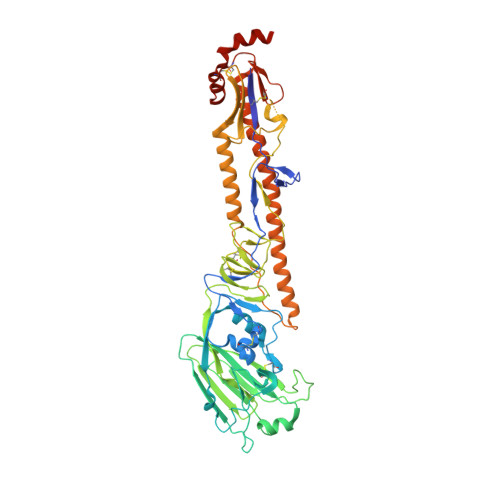Structure and receptor binding preferences of recombinant hemagglutinins from avian and human h6 and h10 influenza a virus subtypes.
Yang, H., Carney, P.J., Chang, J.C., Villanueva, J.M., Stevens, J.(2015) J Virol 89: 4612-4623
- PubMed: 25673707
- DOI: https://doi.org/10.1128/JVI.03456-14
- Primary Citation of Related Structures:
4WSR, 4WSS, 4WST, 4WSU, 4WSV, 4WSW, 4WSX - PubMed Abstract:
During 2013, three new avian influenza A virus subtypes, A(H7N9), A(H6N1), and A(H10N8), resulted in human infections. While the A(H7N9) virus resulted in a significant epidemic in China across 19 provinces and municipalities, both A(H6N1) and A(H10N8) viruses resulted in only a few human infections. This study focuses on the major surface glycoprotein hemagglutinins from both of these novel human viruses. The detailed structural and glycan microarray analyses presented here highlight the idea that both A(H6N1) and A(H10N8) virus hemagglutinins retain a strong avian receptor binding preference and thus currently pose a low risk for sustained human infections. Human infections with zoonotic influenza virus subtypes continue to be a great public health concern. We report detailed structural analysis and glycan microarray data for recombinant hemagglutinins from A(H6N1) and A(H10N8) viruses, isolated from human infections in 2013, and compare them with hemagglutinins of avian origin. This is the first structural report of an H6 hemagglutinin, and our results should further the understanding of these viruses and provide useful information to aid in the continuous surveillance of these zoonotic influenza viruses.
Organizational Affiliation:
Influenza Division, National Center for Immunization and Respiratory Diseases, Centers for Disease Control and Prevention, Atlanta, Georgia, USA.


















